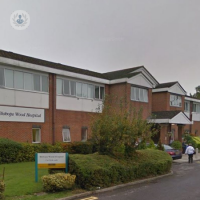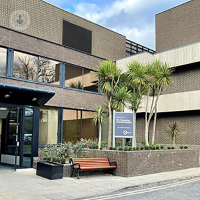Osteoporosis of the spine
What is osteoporosis of the spine?
Osteoporosis is a condition in which the bones become weak and brittle. This results from the body either making too much or too little bone. When examining bones through a microscope, healthy bones have a healthy honeycomb-like structure, whereas bones affected by osteoporosis have larger spaces, weakening their structure. As a result, bones affected by osteoporosis are very susceptible to fractures and breaks. Osteoporosis can affect any bone, but commonly it affects your spine.

Is it osteoporosis of the spine a lifelong condition?
Whilst many will suffer from a spinal fracture resulting from osteoporosis for a while before being diagnosed and seeking treatment, once a diagnosis of osteoporosis is made, treatments for this condition can work to prevent future fractures.
What are the symptoms of the osteoporosis of the spine?
When the spine is affected by osteoporosis, fractures of the vertebrae can result in pain, a hunched posture (spinal curvature) and a resulting loss in height. Often, the pain will worsen when walking or standing, and moving your upper body can be difficult. Fractures in the lower spine often result in greater pain than those in the upper spine.
How is osteoporosis diagnosed?
If osteoporosis is suspected, you will likely have a DXA or DEXA scan which is a low-intensity X-ray scan that measures bone density. This is a painless procedure and is proven to be very reliable in diagnosing osteoporosis. If you have back pain, it is likely that you will receive an X-ray as well to confirm a fracture in the vertebrae.
What are the causes of osteoporosis of the spine?
A reduction in bone density is normal as we age, but some have a greater loss in bone density than normal. In addition, women are more at risk of developing osteoporosis than men, particularly following the menopause, when a reduction in bone density is fastest. Smoking, an unhealthy BMI, a family history of the osteoporosis of the spine and certain medications can also put you at risk of developing osteoporosis.
Can osteoporosis of the spine be prevented?
It is not possible to prevent osteoporosis completely, but you can reduce the risk of developing it by taking certain measures:
- Diet – rich in calcium and vitamin D.
- Stopping smoking
- Reduce alcohol intake
- Frequent exercise (weight-bearing and muscle strengthening exercises)
What are the treatments for osteoporosis of the spine?
If you have suffered a spinal fracture as a result of osteoporosis, you will be given pain medication to reduce the pain whilst the fracture heals. You will also be advised to have physiotherapy, as movement is important in healing and preventing fractures. Some people may require a back brace or support. You will also likely take medications to improve bone strength.
Other treatments for spinal osteoporosis include the following (these are quite specialist treatments, and only select surgeons will offer them):
What medications for treating osteoporosis of the spine are available?
Medications to treat osteoporosis include:
- HRT;
- Bisphosphonates – to slow down the rate of bone loss;
- Selective oestrogen receptor modulators;
- Other hormone treatments.
Which type of specialist treats osteoporosis of the spine?
Osteoporosis and resulting spinal fractures are treated by both rheumatologists and endocrinologists.









